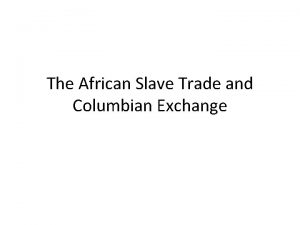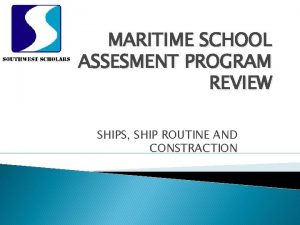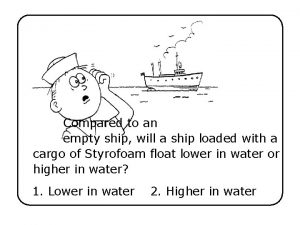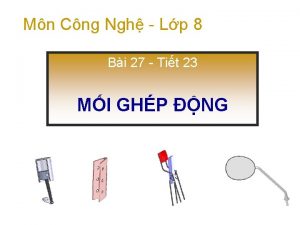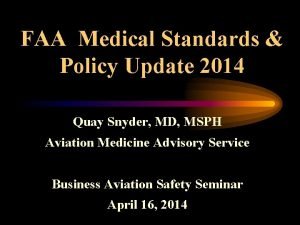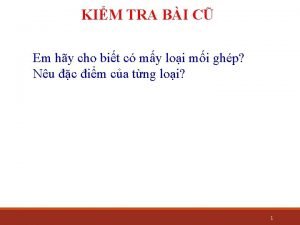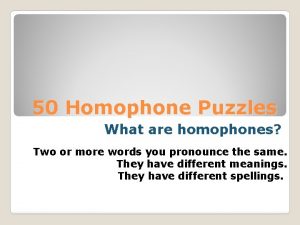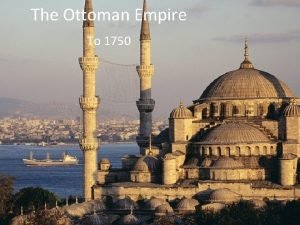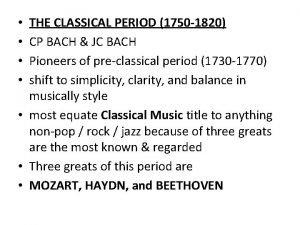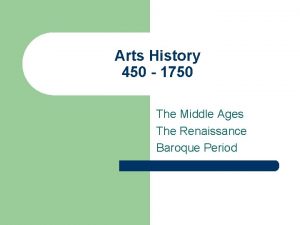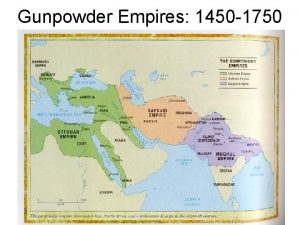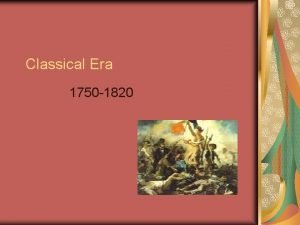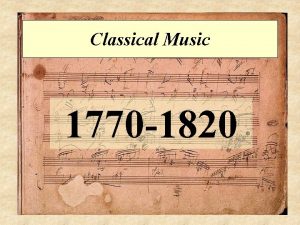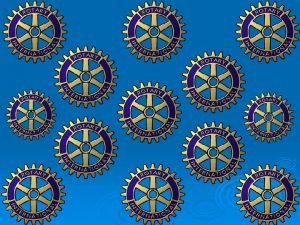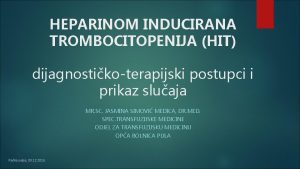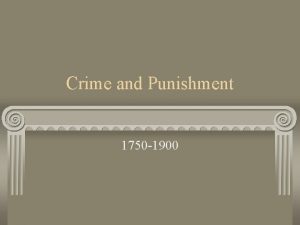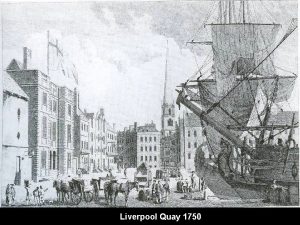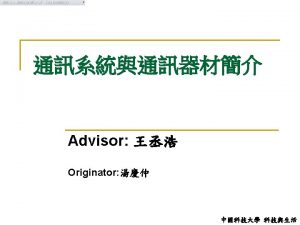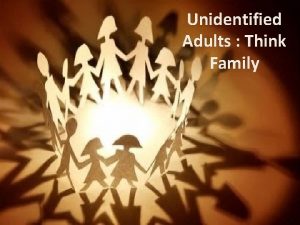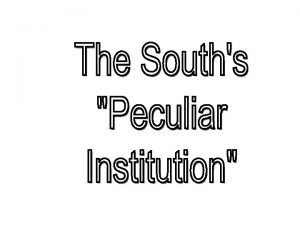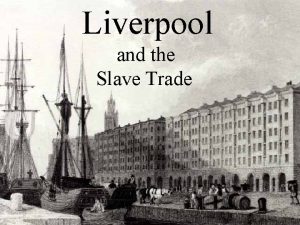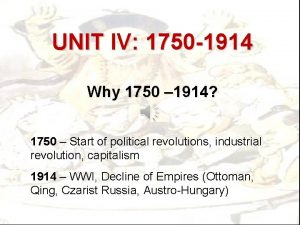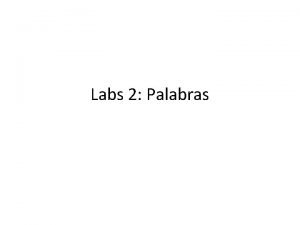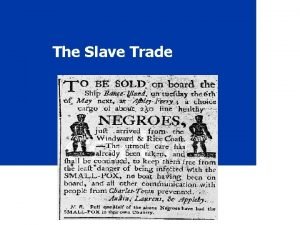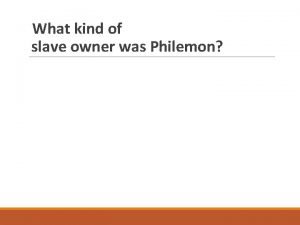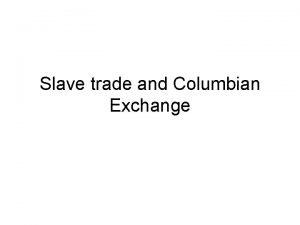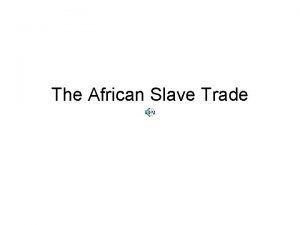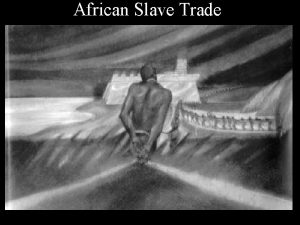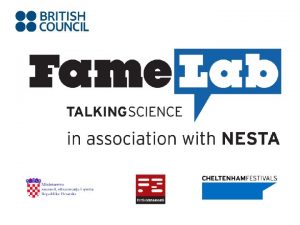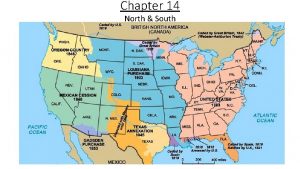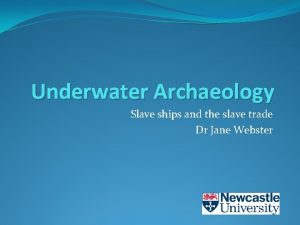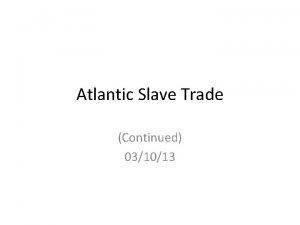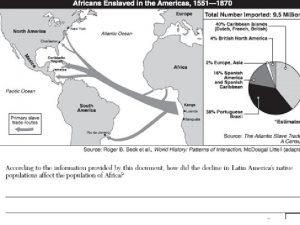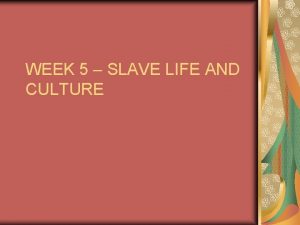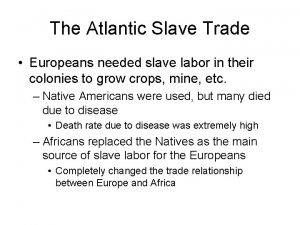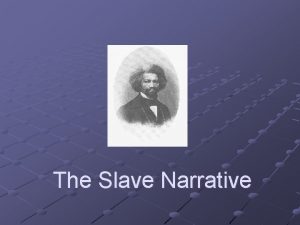Liverpool Quay 1750 An unidentified Liverpool slave ship


























- Slides: 26

Liverpool Quay 1750

An unidentified Liverpool slave ship

Thomas Clarkson and Granville Sharp

John Newton – Liverpool Sea Captain Who Composed “Amazing Grace”

Olaudah Equiano

Thomas Clarkson with his chest of “African productions”

Objects Clarkson bought in Liverpool. Clockwise from bottom: leg shackles, thumbscrew, handcuffs, speculum oris for prying open the mouths of slaves refusing to eat on shipboard.

Poster depicting the hellish conditions on the slave ships


1783 - The Zong- 132 slaves thrown overboard

The First Human Rights Campaign • • • • Research Newsletters and Leaflets Lobbying Petitions Boycott Publications Political Action Public Meetings Lobbying Petitions Boycott Publications Political Action Sugar Boycott Huge Public Meetings

Mass petitions were submitted to Parliament.

Petitions To Parliament

The Scale of the Trade Between 1783 and 1793, 878 round trips made by Liverpool slaving ships, carrying over 300, 000 slaves. 1807: Liverpool saw £ 15 million pass hands in the trade 18 th century: 6 million people uprooted By the 1850 s: 12 million – some historians put the figure as high as 40 million.



“I have no sufficient data to warrant calculation but I suppose not less than 100, 000 slaves are annually exported from all parts of Africa and that more than one half of these are exported in English ships” - Journal of a Slave Trader - John Newton

William Roscoe, Poet and MP

The Wrongs of Africa - a 35 page poem published in 1787 “Blush ye not to boast your equal laws, your just restraints, your rights defined, your liberties secured; Whilst with an iron hand ye crush to earth the helpless African; and bid him drink that cup of sorrow, which yourselves have dashed, indignant, from oppression’s fainting grasp. ” -William Roscoe

The House of Commons in 1807

Roscoe Opposes The Slave Trade Hansard records, on February 23 rd 1807, that: “I have, ” said the hon. gentleman, Mr. Roscoe, “long resided in the town of Liverpool; for 30 years I have never ceased to condemn this inhuman traffic; and I consider it the greatest happiness of my existence to lift up my voice on this occasion against it, with the friends of justice and humanity. ”

1807 Lord Holland Wrote to Roscoe on Behalf Of The Cabinet “rejection at Liverpool is considered by us all as one of the greatest disgraces to the country, as well as misfortunes to the party, that could have happened. ” William Wilbeforce told him that his vote had been worth thirty of anyone else’s as he would have to pay a price for his principles.

Gladstone’s Parents: John and Anne

The now demolished St. Peter’s Church, Liverpool.

Gladstone’s parents were married at St. Peter’, Church Street. In 1890 he purchased its patronage His son, Stephen, served as Rector. Gladstone. Argent a savage's head wreathed with holly and distilling drops of blood proper within a flowered orle gules all with an orle of martlets sable. The patronage was vested in the mayor and aldermen, such as had been aldermen or bailiffs' peers, and the common council. In 1836 the reformed corporation sold the patronage to John Stewart, and about the same time provision was made for the union of the two rectories. (fn. 45) From the Stewarts the patronage was purchased in 1890 by the late W. E. Gladstone, whose son, the Rev. Stephen E. Gladstone, now holds it. (fn. 46) There is no rectoryhouse, but the gross value of the benefice is stated as £ 1, 600 a year, largely derived from fees. (fn. 47) From: 'Liverpool: Churches', A History of the County of Lancaster: Volume 4 (1911), pp. 43 -52.

St. Andrew’s, Rodney Street
 Brookes slave ship
Brookes slave ship A 60 g sample of tetraethyl-lead a gasoline
A 60 g sample of tetraethyl-lead a gasoline Ship routine
Ship routine Compared to an empty ship would a ship loaded
Compared to an empty ship would a ship loaded Ruud de quay
Ruud de quay Mối ghép nào dưới đây thuộc khớp quay
Mối ghép nào dưới đây thuộc khớp quay Faa caci asthma
Faa caci asthma Mối ghép pittông xilanh có mặt tiếp xúc là
Mối ghép pittông xilanh có mặt tiếp xúc là Giải phẩu xương đòn
Giải phẩu xương đòn Homophones for leek
Homophones for leek Lò quay
Lò quay Liệt thần kinh quay
Liệt thần kinh quay Yot liverpool
Yot liverpool Trái đất quay quanh mặt trời
Trái đất quay quanh mặt trời Neoclassicism (1750–1850)
Neoclassicism (1750–1850) 1750 ottoman empire
1750 ottoman empire 1820-1750
1820-1750 Colegio interparroquial del sur santo cura de ars
Colegio interparroquial del sur santo cura de ars Musical representation of specific poetic images
Musical representation of specific poetic images 1750-1825
1750-1825 Land based empires 1450 to 1750
Land based empires 1450 to 1750 1820-1750
1820-1750 Silver trade 1450 to 1750
Silver trade 1450 to 1750 1820-1750
1820-1750 Rotariens célèbres
Rotariens célèbres Heparinom indukovana trombocitopenija
Heparinom indukovana trombocitopenija Crime and punishment 1750 to 1900
Crime and punishment 1750 to 1900
